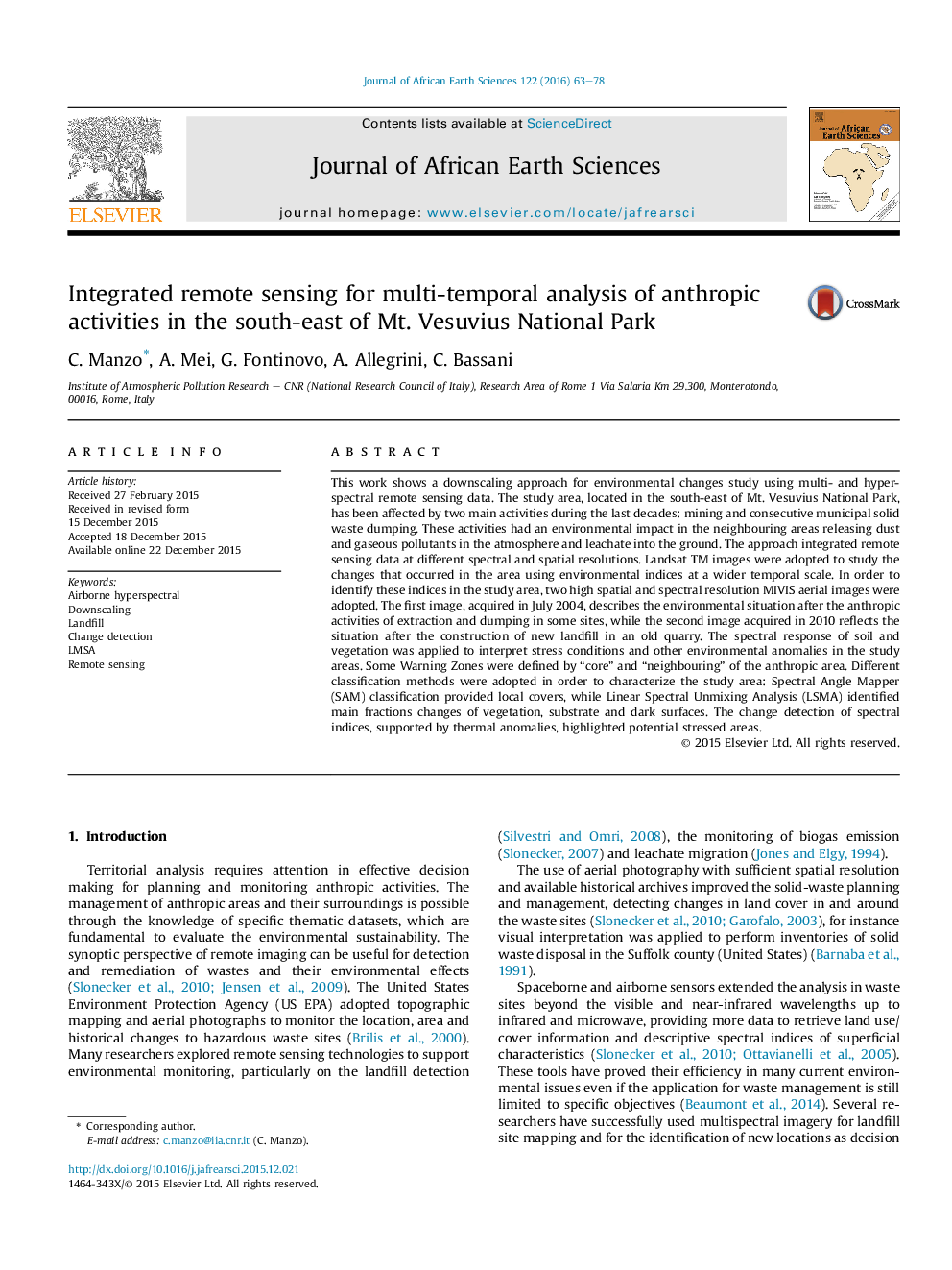| کد مقاله | کد نشریه | سال انتشار | مقاله انگلیسی | نسخه تمام متن |
|---|---|---|---|---|
| 4728201 | 1640186 | 2016 | 16 صفحه PDF | دانلود رایگان |

• Integration of multi-platform sensors for environmental characterization.
• Landsat TM provided changes occurred at wider temporal scale.
• Multitemporal MIVIS images improved the spectral analysis.
• Spectral response of features was applied to interpret stress conditions.
• Spectral indices and thermal anomalies highlighted potential stressed areas.
This work shows a downscaling approach for environmental changes study using multi- and hyper-spectral remote sensing data. The study area, located in the south-east of Mt. Vesuvius National Park, has been affected by two main activities during the last decades: mining and consecutive municipal solid waste dumping. These activities had an environmental impact in the neighbouring areas releasing dust and gaseous pollutants in the atmosphere and leachate into the ground. The approach integrated remote sensing data at different spectral and spatial resolutions. Landsat TM images were adopted to study the changes that occurred in the area using environmental indices at a wider temporal scale. In order to identify these indices in the study area, two high spatial and spectral resolution MIVIS aerial images were adopted. The first image, acquired in July 2004, describes the environmental situation after the anthropic activities of extraction and dumping in some sites, while the second image acquired in 2010 reflects the situation after the construction of new landfill in an old quarry. The spectral response of soil and vegetation was applied to interpret stress conditions and other environmental anomalies in the study areas. Some Warning Zones were defined by “core” and “neighbouring” of the anthropic area. Different classification methods were adopted in order to characterize the study area: Spectral Angle Mapper (SAM) classification provided local covers, while Linear Spectral Unmixing Analysis (LSMA) identified main fractions changes of vegetation, substrate and dark surfaces. The change detection of spectral indices, supported by thermal anomalies, highlighted potential stressed areas.
Figure optionsDownload as PowerPoint slide
Journal: Journal of African Earth Sciences - Volume 122, October 2016, Pages 63–78